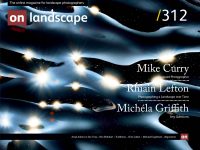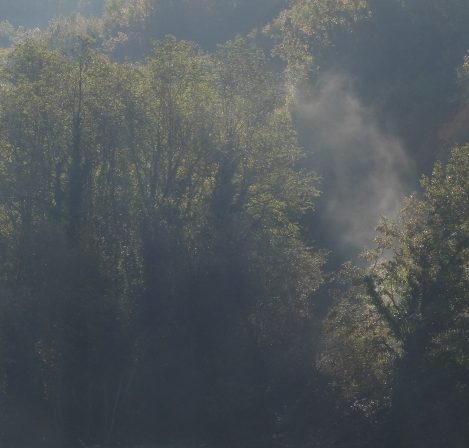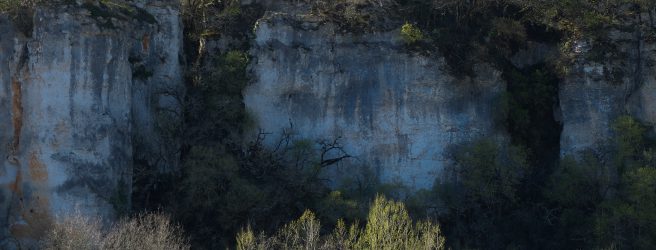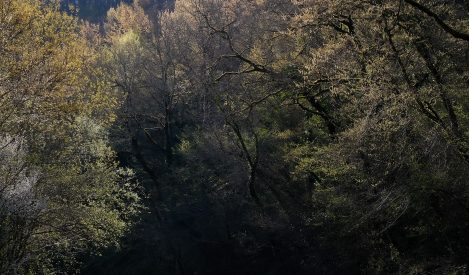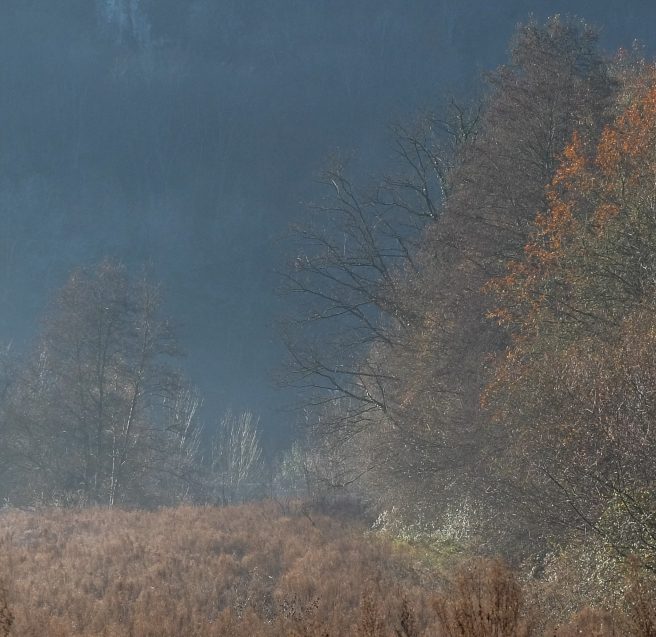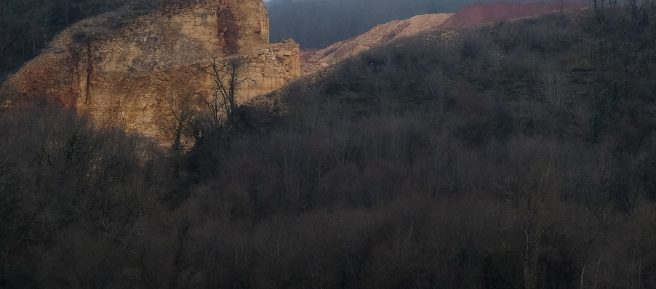witness to landscape transformation

Rhiain Lefton
Rhiain Lefton is a British landscape photographer who lives in the Lot, France. She was educated in France and the UK, where she gained a Masters with distinction in Critical Theory and studied photography.
Rhiain’s immersive work is part of a growing field of ecological photography that is in dialogue with ideas around the Anthropocene. She exhibits and sells internationally, has photographs in private collections, and takes commissions.
Rhiain runs immersive landscape photography courses in a beautiful part of rural SW France where photographers (all levels) stay in a restored 16th century farmhouse with full-board so as to dedicate their time to their practice. The week gives participants the chance to hone their particular sensitivity to the landscape and develop a cohesive body of work, in contrast with image inflation.
immersivelandscapephotography.myportfolio.com
Défense d’entrée
After some years of wandering and photographing the mysterious Thèze valley in South West France - a valley barely 500m wide and a few kilometres less that its 26 kilometre river - a ‘Défense d’entrée’ (Do not enter) sign and barrier went up in front of an informal path which follows the river to one of my favourite late winter scenes of golden ochres, soft browns and purple-reds. At the same time, a French flag was raised above the fisherman’s cabin in view from the barrier.
This region is often now seen as idyllic for its relatively untouched landscapes of mixed woodland, rocky outcrops, rivers, extraordinary light, and the possibility to explore fairly freely. However, until the 1970s it was an area of subsistence farming; life was very hard and most of the land was used for crops: maize, wheat, vines, walnuts, vegetable gardens (and earlier hemp, unPl colonial industries replaced it).
For centuries, farmers worked small plots of land that covered the hillsides and were separated by dry stone walls, of which many ruins remain. Those who had plots in the valley that bordered the river were bound to keep their part of the river edges ‘clean’ to reduce flooding, and they farmed right up to the water edge to maximise crop yields.
The landscape would have been a very different place to photograph then as black and white photographs of the valley from the early 20th century corroborate. Farming practices and policy have a huge effect on the landscape composition.
Land as Archive
When we photograph landscapes over time, we are witness to landscape transformation, and photographs create visual archives of the land. These changes are constant, some obvious, some less so, and some intangible, as over time, we also learn about places and they become imbued with meaning, difficult to shake off. Practice builds up the personal, not just informative reading of landscape, stories give depth and our own life path figures; the camera moves more into the shadows and the light.
Interviewing neighbours, both in their 70s, who have known each other their whole lives, they tentatively talk about their fathers being deported to work farms in Germany in the second world war. “Your father too? My father too”.
In this cradle, we see the effects of deep time and the changes of the last couple of centuries. Geological crevices carved out from millennia-old rivers form the valley where the early trade tracks took farmers to the watermills with their grain, later replaced by a tarmacked road used by the Nazis as they murderously returned north, and we now drive to find the best photographic spots.
This road also enabled the development of an industrial size quarry in the 1930s which replaced the many small quarries that previously peppered the valley. This quarry was controversially expanded just a couple of years ago after debate in the community around job creation and environmental damage. The opening, always a large mouth of geological data, now jaggedly zig zags deeper into the hill.
Oaks, Maples, Hornbeams rise up on the hillsides
As most of the next generation have left for work elsewhere and a European directive has come in to protect waterways with a non-cultivable ‘natural filter’ on either side, trees and bushes have flourished, and new ecosystems have developed. A few areas of agriculture remain, such as a sole walnut grove, some maize for animal feed, and some small poplar plantations, which are noteworthy for their regularity, but this small, beautiful valley has never been so wooded.
As I have photographed over the years, I have become more attuned to seemingly endless diversity in form and colour. Each moment brings a different set of variables, which in turn affects compositions. A warm, long autumn means the leaves fall late and are unusually lit by the lower winter sun. A particularly beautiful January shines light on ‘bare’ silver lichen-covered trees. This year’s wet weather means summer landscapes are more lush than usual, the strong mid year sun creating radiant streams of light into woodland groves.
The river itself, which shimmers in early morning light, is difficult to photograph as the border vegetation blocks views. This beauty belies the fact that the river is no longer fed by its source as further north there are places where the bed is dry and completely covered by a tunnel of brambles and blackthorn. This may be due to plots no longer being cleared or perhaps because of a mechanical cleaning of the river bed which damaged the limestone floor.
Enormity and the minute is in every click of the shutter
A few weeks ago, I parked up by the large craggy overhanging rocks near the quarry to look West to one my favourite panoramas, an unassuming swathe of mixed woodland that gets bathed by the setting sun so as to bring forth the delicate trunks of young growth and gentle swirls of foliage. It took me a moment to realise, a ‘time-stood-still moment’ of unwilling admission, that a recently planted field of wee poplars was growing in front of the woodland.
It would be around 20 years until I could return to the vista I like to photograph, the time for the fast growing crop to mature and be cut for wood for industry. A non-amount of time and a painful amount of time for me to be cut off from the endless mystery within this area of land.
At a similar time, I went back to the ‘Defense entree’ barrier, slid past - I had made some calls and been told I could ignore it - and walked past the fisherman’s hut. The French flag was on the ground, scrunched up in the muddy grass of the wet spring we were having. The village baker said everyone in the fisherman’s association had fallen out with each other.
The river here curves and drops enough to create quite a noise of rushing water, unusual in its energised movement through and onwards. It will continue past disused mills (saw; wheat and walnut), the picturesque village football grounds, a buried medieval graveyard and fortified tower, and a site of prehistoric finds. Just a few more kilometres and it will reach the Lot river, to then be taken West to the Garonne and eventually out to the Atlantic.
As photographers, enormity and the minute is in every click of the shutter knowing the landscape is in constant flux through growth and decay, human intervention and experience.

